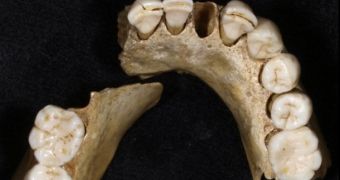A new study of ancient DNA samples taken from Neanderthal fossils indicates that the hominids were going extinct even before our Homo sapiens ancestors began to occupy Europe. Previously, it was thought that the Neanderthalian populations were stable at that time.
Investigators from the University of Uppsala, in Sweden, published their study in a paper called “Partial genetic turnover in neandertals: continuity in the east and population replacement in the west,” which appears in the February 23 issue of the esteemed journal Molecular Biology and Evolution.
Working together with colleagues in Stockholm and Madrid, the scientists established that Neanderthals began to die off in Europe about 50,000 years ago, more than 10 millennia before Homo sapiens began to move in.
One of the most intriguing conclusions in the new study was that most of the Neanderthals perished at that time. Only a very small population endured, which then recolonized parts of Europe until our ancestors came from Africa.
The two species co-existed and intermingled for a while, but then the earlier hominids disappeared completely. During the study, scientists learned that only very small genetic variations were present among Neanderthals who repopulated Europe, indicating a genetic bottleneck of sorts.
“The fact that neanderthals in Europe were nearly extinct, but then recovered, and that all this took place long before they came into contact with modern humans came as a complete surprise to us,” research scientist Love Dalén explains.
“This indicates that the Neanderthals may have been more sensitive to the dramatic climate changes that took place in the last Ice Age than was previously thought,” adds the expert, who holds an appointment as an associate professor at the Swedish Museum of Natural History, in Stockholm.
The differences between “older” and “newer” Neanderthals were made obvious through genetic comparisons. The former – specimens of which were recovered from Asia and Spain – had much more genetic diversity than the latter, PhysOrg reports.
“The amount of genetic variation in geologically older Neanderthals as well as in Asian Neanderthals was just as great as in modern humans as a species, whereas the variation among later European Neanderthals was not even as high as that of modern humans in Iceland,” UU associate professor Anders Götherström explains.

 14 DAY TRIAL //
14 DAY TRIAL //